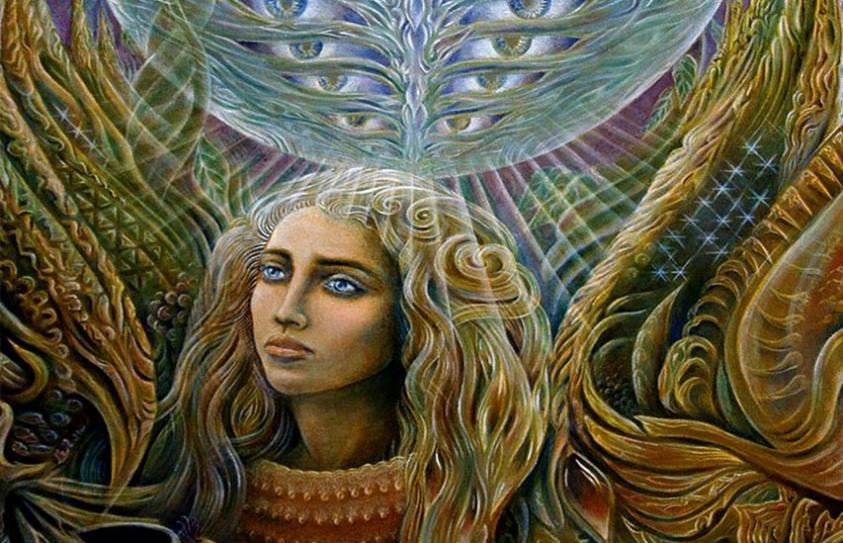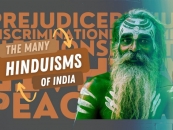
WILL TRADITION EVER TRANSITION
by Simran Puri April 8 2015, 1:05 pm Estimated Reading Time: 5 mins, 36 secs“Even a stopped Watch showscorrect timetwice a day” bespoke an optimist.
It is a matter of contemplation whether the same holds true for the march of time that sometimes evolves and at other times merely passes by. The inexorable links that transition through the era remain a continual chain that connects the old with the new. Sometimes tradition survives the transition. At other times it just fades away into oblivion and the obsolete. Yet there are times when it metamorphosis’s into bettering the plight of the human spectrum. In this context, the changing laws merit a constant consonance with modernity. The premise is however more complex than it appears, especially in India where layers of past centuries have lain embedded with variant cultures, religions, belief systems and thereby deeply rooted personal laws.The noted historian Will Durant once said that “The family is the first unit of civilization”. The primordial truth of this statement is reiterated in the context of all times. It is the belief systems in this unit that permeate through the work environs and travel with the person who becomes the carrier and custodian of these beliefs. Whether in part or in full is determined by the circumstances of his/her survival. The changing context begs the question: When is the time to change and discard? Or to continue perpetuation of what is a sacrosanct tradition?
The adherence to tradition conflicts with the challenges of modern societal changes. The receptacles of traditionalists get blinded with glaring changes in the realm of contemporary realities.The schism between generations only gets wider. Tradition masquerades as the sole terra firma on which the future must build. Modernity scoffs at the obsolete with compelling disregard. For those betwixt lies the no man’s land that each must traverse. Closer home are visible, with palpable shock and awe,many truths that encompass contemporary occurrences. The conservative resistanceto receiving a wedding card for a gay marriage being solemnized abroad.“But which ones are the baraatis?” wondered the aged grandmother.Raising heckles are other myriad, unfolding marvels. The invite for celebration of an adoption by a single Hindu woman. The marvel of the enriched widow who inherits ancestral estate after her husband’s demise. The spectacle of a daughter lighting her father’s funeral pyre. The audacity of another daughter who reports male sexual abuse within her family, to the nearest police station or her school teacher. The rampant occurrence of a bride refusing marriage just before the ceremony because the groom gets an epileptic fit or demands dowry at that crucial time. The marvel of parents spending humungous amounts on the education of their daughter rather than on her dowry. Or couples that pride themselves on their sole female progeny devoid of the need to assemble unwanted female offspring until the male jackpot. The obiquitous couples who choose to live in, free from the bondage of matrimony with its antecedent and consequent implications. The modern wife who prefers the family Court for emancipation rather than the age old flaming stove. Aged parents, devoid of traditional family support, invoking their newfound rights in Court, to be maintained by their children. Duty and guilt, commitment and freedom,remain evolving concepts that each era redefines. Paths to life and redemption are many, and not always in tandem with tradition.It remains to be seen how high the societal brows can further arise reacting to the changing transitions from tradition to modernity.
The changes are here to stay. Some permissible within the confines of law, others that remain within dark closets. Personal laws remain the custodians of societal norms and personal issues. These determine law regarding the validity of marriage, grounds of divorce, alimony, adoption, property rights etc. Since the year 2005, women in Hindu law are equal coparceners with males in property, in traditional set ups. Since 1956 a single Hindu woman is entitled to adopt a child, and her inheritance as a widow is absolute with no male revertioners from husband’s family claiming after her.The ‘Live in’ woman is now safe in her right of residence and maintenance under the Domestic Violence Act 2005, if the relationship is ‘in the nature of a marriage’. Bigamists, beware of this clause! In the absence of a Will, all daughters are equal inheritors to parental property. The caveat however lies in the women being willed out of bequest.What the law gives, the will of the male’s ‘Will’, will take away.The Muslim women remain bounden to their personal law getting no more than the ‘meher’. Triple Talaq is still valid in India.The law criminalisesmale same sex relationships that received short respite from the Delhi High Court. Such marriages are solemnized abroad in pockets that recognize them. Clinics thrive behind dark alleys to conduct sex determining tests. Their equipment is confiscated, some dust raised, then there is quitetude. Its business as normal. Marriage markets thrive on the first matrimonial query “How much worth will the marriage be?”The ‘worth’ being the monetaryquantum. The girl’s father presents the itemized breakdown. The ‘worth’ of her jewellery, property – both gifted and inheritable, silver articles, apparel, car, and lastly the dowry of ‘gifts’to the groom and his voluminous brood. The ‘cost’ of her education and ‘earning capacity’ do not figure in the items. Her sole mandate dictates looking after the husband’s family. Many a surgeon and Chartered Accountant wife have been reduced to domestic chores by the dictates of their marriage. Nuptial longevity depended upon their abandoning professions. Many professional women have happily forsaken their careers for comfort that came with their man.
Thus far, life remains a change in continuum,witnessing people, events and occurrences evolve. The time and place for tradition remains indeterminate. Sometimes in abandonment, sometimes in reiteration. The basic elements of human existence may choose to remain rooted in tradition, but the contemporary compulsions of survival and growth will continue to break new grounds. Man and woman,each continually grappling with the squeamish within, question their gender roles that remain open to question. Does settling one unsettle the other?Does modernity better tradition? Do traditions even have a place in the modern context or are they the archaic, only deserving of abandonment?Whether abandonment of tradition has secured bettermentin the present context remains a perpetual quest. In the current spring, what better summation than the quote of a philosopher who said “Do not count the spring unless you have stepped on twelve daisies”.




-173X130.jpg)
-173X130.jpg)
-173X130.jpg)
-173X130.jpg)

-173X130.jpg)
-173X130.jpg)
-173X130.jpg)